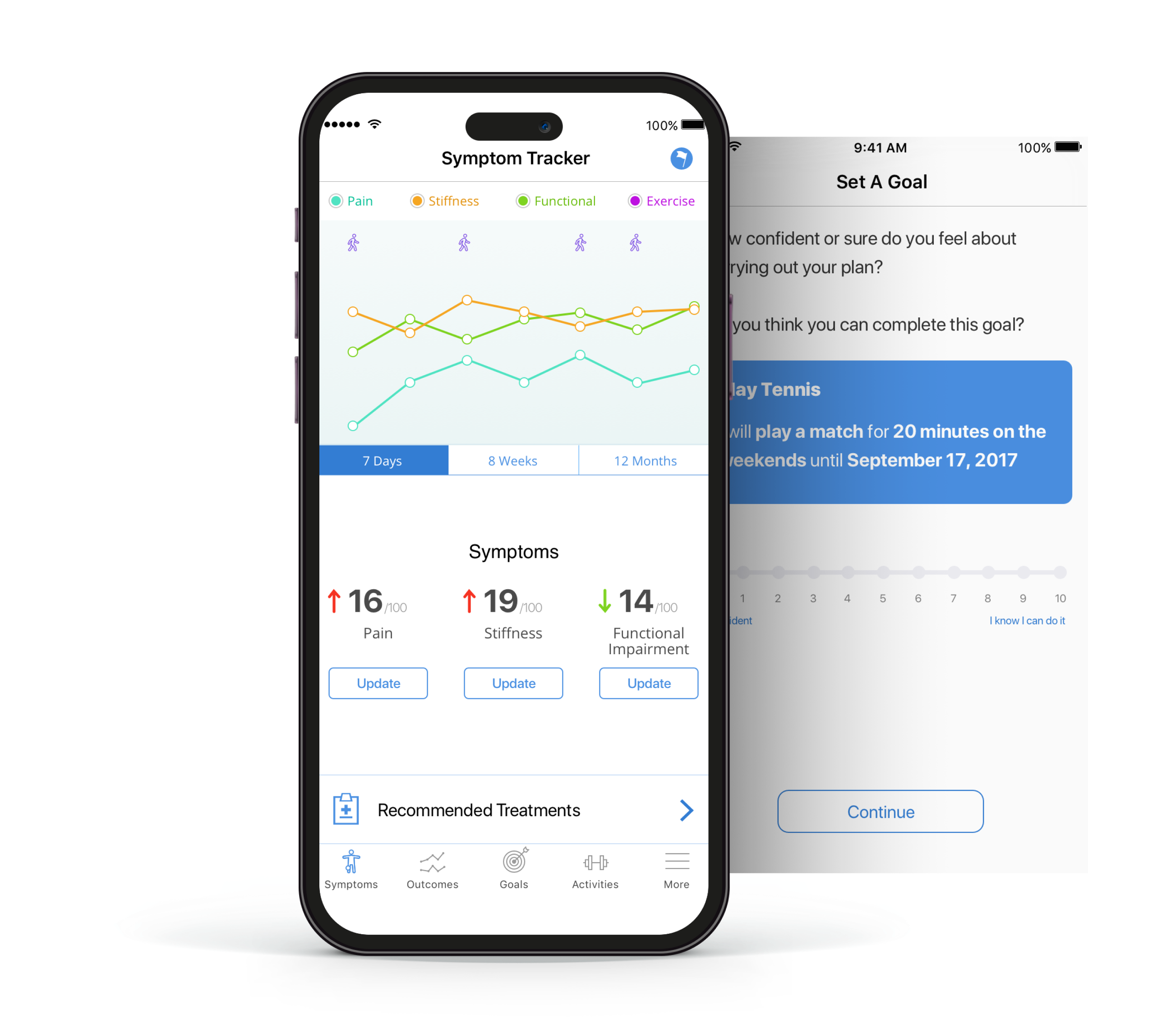KOASK
Co-designing a knee osteoarthritis mobile health app with patients and physicians
The Knee Osteoarthritis Self-management and Knowledge (KOASK) app helps patients to schedule self-management strategies in collaboration with their family practitioner, including physical activities that will help make improvements towards their quality of life.
Condition/Research Area

Improving user retention by including them in the development process
Mobile health apps in the osteoarthritis space have failed to impact patient outcomes and provider expectations, despite high interest and demand. In fact, the majority of medical apps fail to retain users longer than 90-days, and one key reason is that actual users are not integrated into the app development and design process. To change this paradigm and provide patients and physicians with digital health apps that improve patient outcomes, researchers at the University of Calgary worked with Tactica to implement an integrated knowledge translation plan putting users at the center of the design process.
An effective qualitative co-design approach
Researchers collaborated with Tactica, using a qualitative co-design process, to create an evidence-based self-management and patient-physician communication app. Participants included knee osteoarthritis patients, physicians, industry stakeholders, researchers and Tactica as an industry partner. The approach involved focus groups, prioritization of activities, and pre-post quality and satisfaction Kano survey.
After several exploratory meetings with patients and physicians, Tactica worked closely with researchers to synthesize feedback into a cohesive app concept. Almost a dozen features were identified and Tactica began creating wireframes, mockups, and a click-through prototype to present to users for another iteration of feedback and refinement.
Mitigating risks in app development with user centered design
The user centered design approach helped mitigate a few common risks in custom software development including: designing an app that exceeds your development budget and delivering an app your users don’t want or can’t use. By including users throughout the development process we were able to confidently refine scope from twelve features to three core features that would be delivered in the minimum viable product (MVP). By focussing development on a focussed list of features users really wanted the following benefits were realized:
- the anticipated development budget was reduced;
- the production team were able to deliver quality rather than quantity;
- there was less risk of cognitive overload for users which has been shown to reduce the effectiveness, adoption, and adherence of digital health apps; and
- most importantly, a key feature, originally hypothesized to be highly desirable to users, was cut when the co-design sessions surprisingly revealed both physicians and patients would not use the app if it was present.
Through a diversity of perspectives, the co-design process revealed important differences between patient, physician, researcher, and developer preferences. Despite the varying preferences between groups, the co-design process achieved consensus on a set of requirements for a knee osteoarthritis management app that met the needs of all stakeholders.


